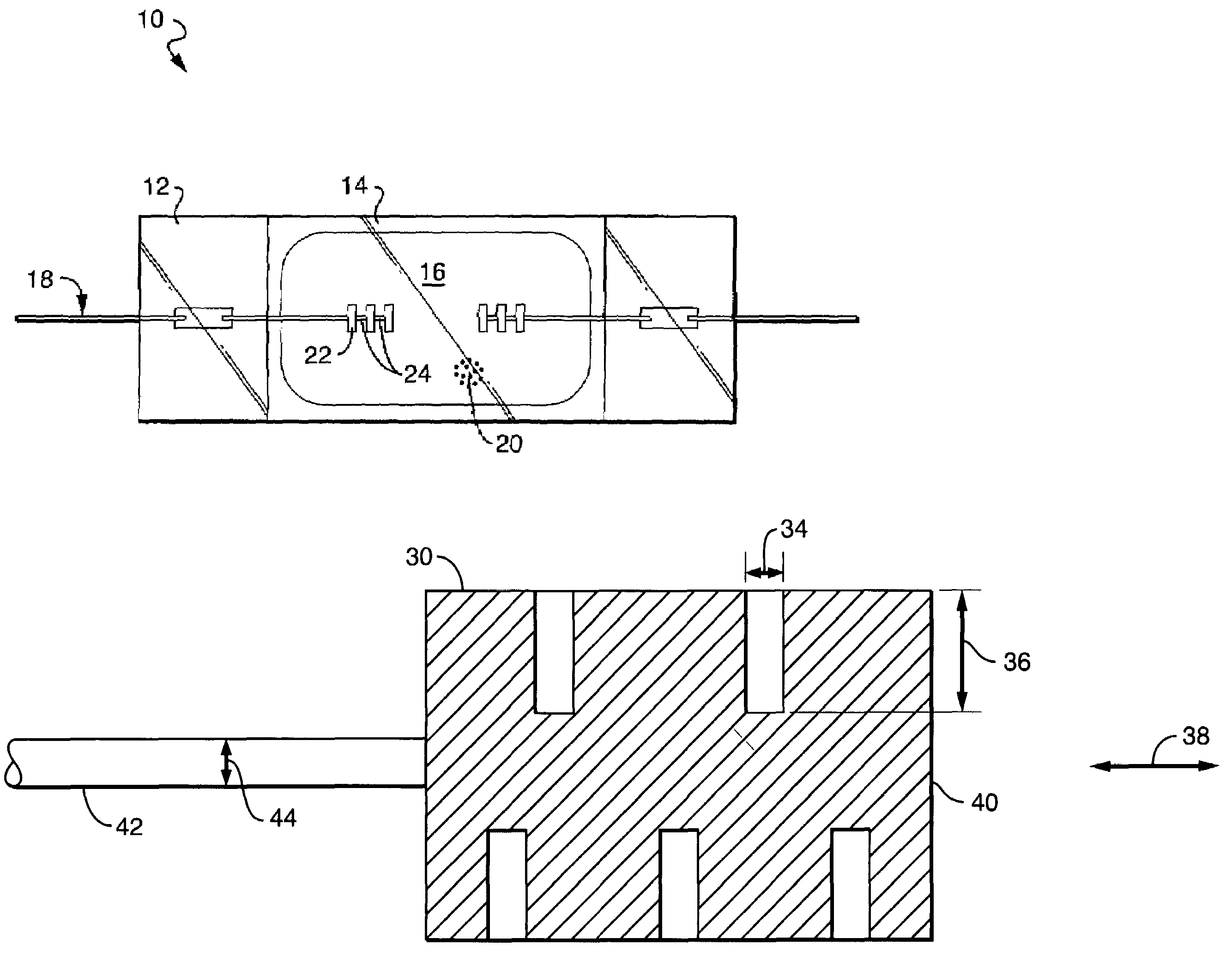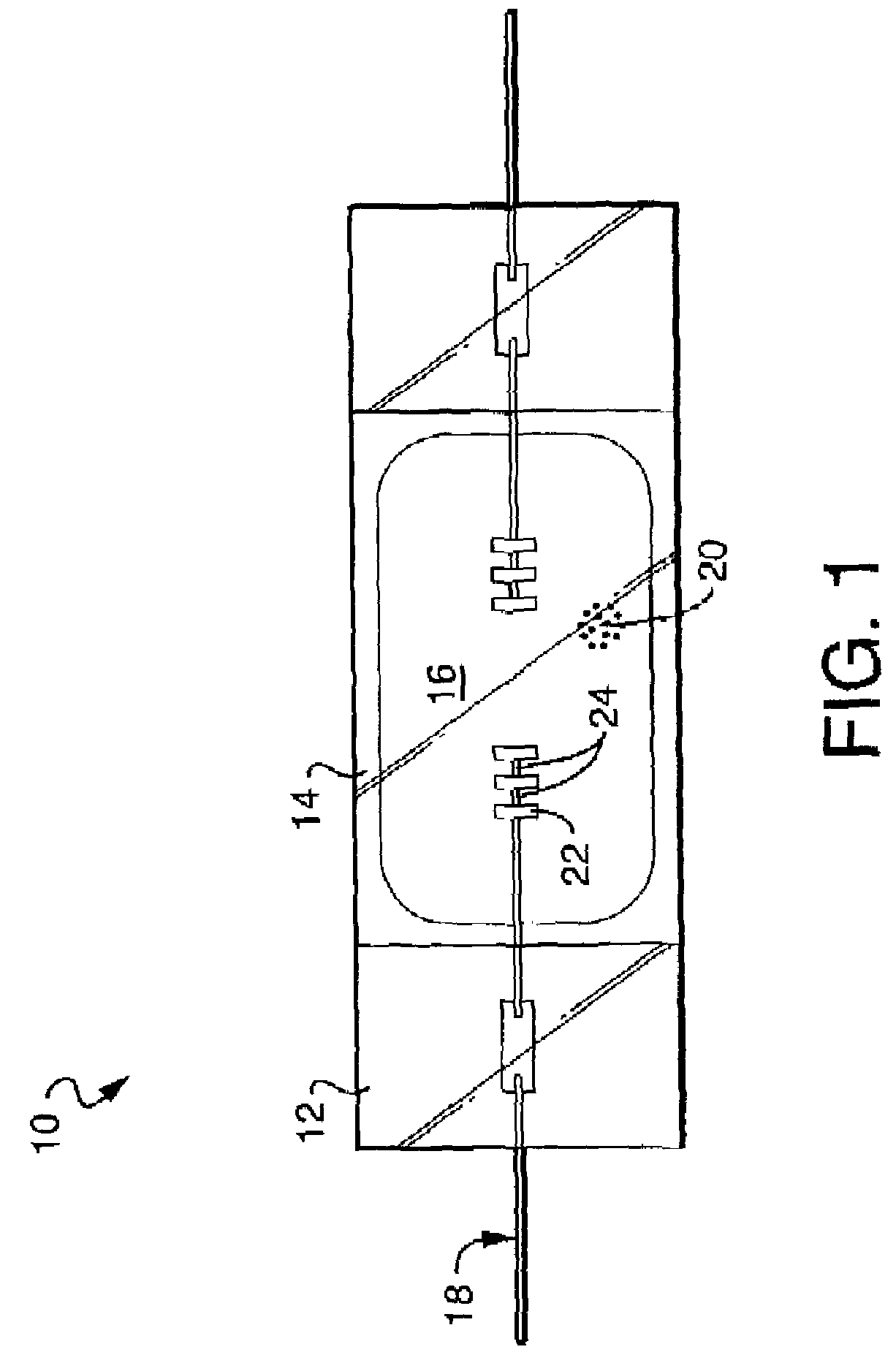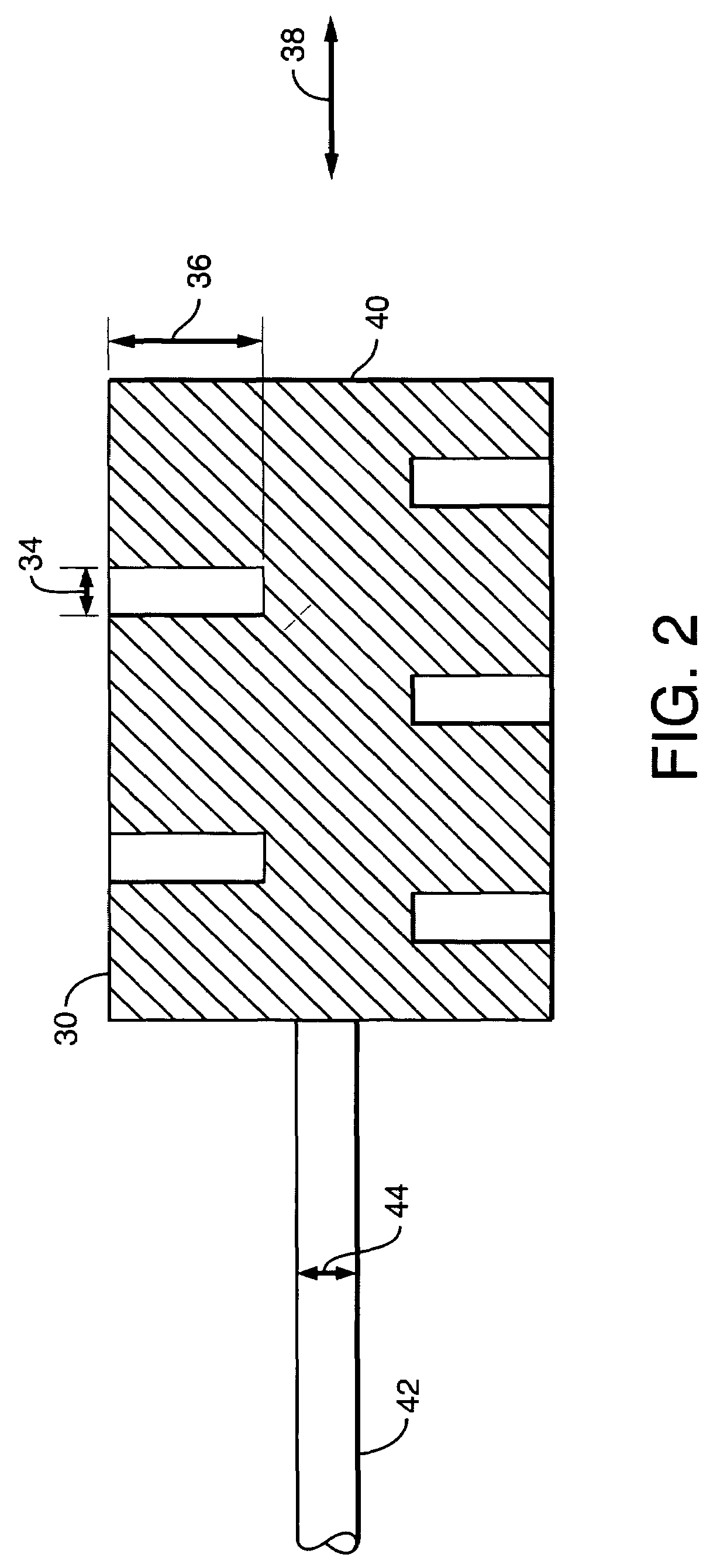Slotted electrode for high intensity discharge lamp
a discharge lamp and electrode technology, applied in the field of electric lamps, can solve the problems of difficult heat transfer of the head, degrading the steady-state affecting the operation of the lamp, so as to reduce the temperature of the electrode tip, reduce the evaporation of tungsten, and improve the maintenance effect of the lamp
- Summary
- Abstract
- Description
- Claims
- Application Information
AI Technical Summary
Benefits of technology
Problems solved by technology
Method used
Image
Examples
second embodiment
[0094]To test the steady-state performance of the recessed electrodes continuous life tests were performed on the slotted thoria-free HQI-T 400 W lamps with dh=1.5 mm and the thoriated control HQI lamp in Table 1. All lamps were burned in the horizontal orientation. HQI lamps with slotted thoria-free electrodes with head diameters dh=1.1 and 1.3 mm were also tested. To investigate the effect of the slots, identical HQI lamps with solid electrodes having the same dimensions as the slotted were additionally tested. All lamps were tested on 50 Hz choke ballasts operating at a nominal current of 3.5 A. After 1500 hours of operation, the following results on arc attachment were observed: All thoriated electrodes were found to run in spot mode attachment as often observed. Nearly all the solid thoria-free electrodes ran in a spot-mode or somewhat constricted arc attachment. All of the slotted (recessed) thoria-free electrodes ran in diffuse mode, consistent with previous observations of H...
third embodiment
[0095]In a third embodiment, shown in FIG. 9, the recesses are replaced by one or more hollow regions on the top of the tip body to achieve a similar hollow cathode effect. Mechanical or laser drilling can form the hollow regions. The hollow regions must satisfy the requirements for a hollow cathode discharge during starting. In the case of argon buffer gas, the diameter of the hollow dh and depth of the hollow lh must satisfy the conditions,
70hp<1200 Pa-cm Equation 6a
The recess depth D must be large enough to contain sputtered tungsten within the recess and to provide enough current:
D>dg. Equation 6b
fourth embodiment
[0096]In a fourth embodiment shown in FIG. 10, such hollow recess regions can be on the front side of the tip body, either alone or with hollow regions on the top of the tip body. The electrode 70 may be formed as a solid body with an inner stem 72 supporting a head 74 at the innermost end of the electrode 70. The head 74 may include a flat end face 76. Formed in face 76 may be one or more recesses such as a hole, slot, slit or groove. The recess may be an axially extending bore 80. Bore 80 has a least spanning distance (diameter) 82 and a depth 84. The diameter 82 is greater than the maximum electron ionization mean free path but less than twice the minimum cathode fall plus one negative glow distance, throughout the glow discharge phase of starting and for the chosen fill gas composition and pressure. The depth 84 is preferably greater than the spanning distance 82. It is understood there may be a plurality of such bores on the front face 76, and that grooves, slots, and similar o...
PUM
 Login to View More
Login to View More Abstract
Description
Claims
Application Information
 Login to View More
Login to View More - R&D
- Intellectual Property
- Life Sciences
- Materials
- Tech Scout
- Unparalleled Data Quality
- Higher Quality Content
- 60% Fewer Hallucinations
Browse by: Latest US Patents, China's latest patents, Technical Efficacy Thesaurus, Application Domain, Technology Topic, Popular Technical Reports.
© 2025 PatSnap. All rights reserved.Legal|Privacy policy|Modern Slavery Act Transparency Statement|Sitemap|About US| Contact US: help@patsnap.com



